Great Philippine eagle, monkey-eating eagle (Pithencophaga jefferyi)
The largest eagle in the world
The Philippine eagle is the largest eagle in the world; yet, most people have never heard of it and, even worse, likely never will. This is not only due to its exotic origin but primarily because of its critically small wild population. The precarious future of the Philippine eagle should serve as a stark reminder of how many species vanish from the face of the Earth, and not solely through the process of evolution…
The world’s largest bird of prey
The largest eagle
Today, we are taking you on a journey to the distant Philippines. On these islands reigns a bird that can easily be described as one of the world’s largest birds of prey – an exceptional contemporary, though not a direct successor, of Haast’s eagle (Harpagornis moorei)…
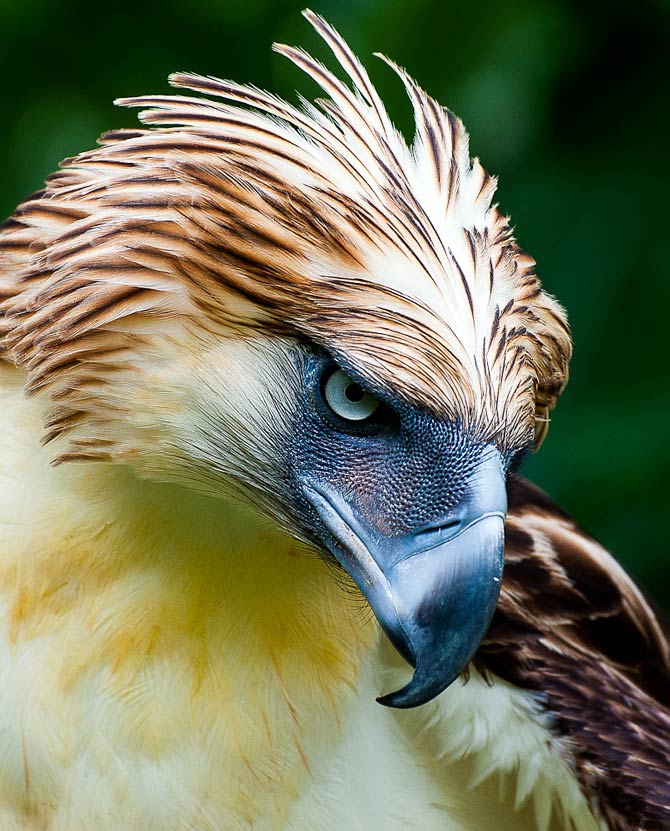
Classification
- Kingdom: Animalia
- Phylum: Chordata
- Class: Aves
- Order: Accipitriformes
- Family: Accipitridae
- Genus: Pithecophaga
- Species: Pithecophaga jefferyi
- Names: Philippine eagle, great Philippine eagle, monkey-eating eagle
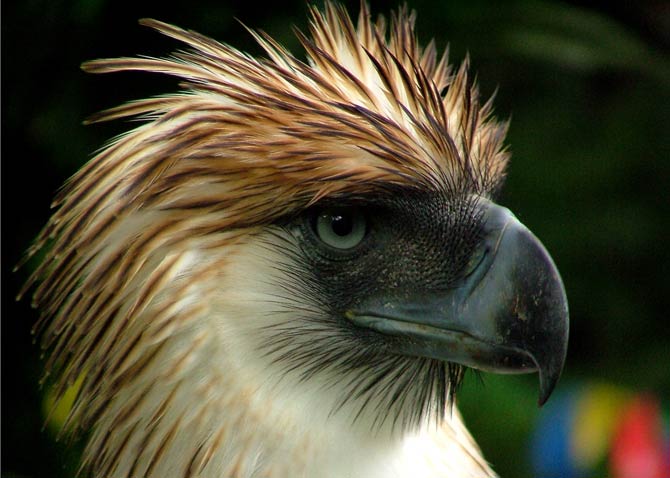
Areas of occurrence
The Philippine eagle is endemic to the forests of the Philippines, inhabiting the islands of Luzon and Mindanao, as well as the provinces of Samar and Leyte. The largest population resides on Mindanao, estimated to be between 82 and 233 breeding pairs.
It inhabits the mountains of the Sierra Madre on Luzon and areas near the stratovolcano Mount Apo and the dormant volcano Mount Kitanglad on Mindanao island.
This magnificent bird prefers highland dipterocarp forests, especially on steep slopes. It can also be found in the lowlands and in mountainous regions up to 1,800 meters (5,900 ft) above sea level. Approximately 9,220 km² (3,560 sq mi) of the eagle’s habitat consist of old-growth forest formations, while the total estimated area where it occurs is about 146,000 km² (56,000 sq mi).
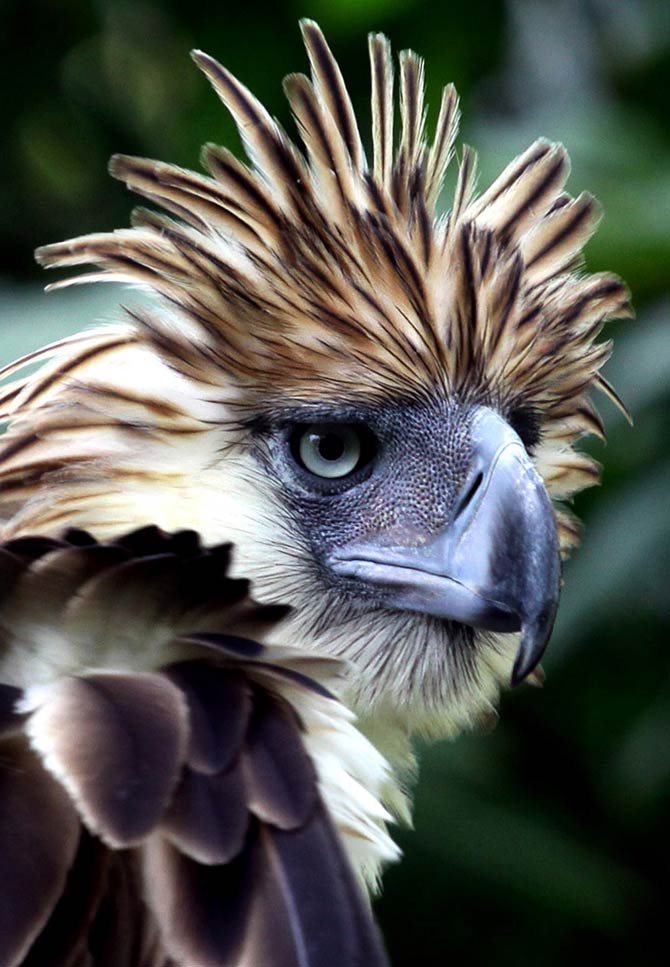
Characteristics
The Philippine eagle is a striking bird with beautiful, long, brown feathers on its head that form an impressive crest, resembling a lion’s mane. This distinctive plume is reminiscent of that of a South American harpy eagle (Harpia harpyja), although many would agree that the Philippine eagle is arguably more aesthetically pleasing. To many birdwatchers, this dignified bird bears a resemblance to a griffin.
It has a dark face, a cream-brown neck and crest, and its dorsal area is covered with magnificent dark brown feathers, while the undersides of its wings are white. Its strong, thick legs are yellow, and its powerful talons are dark and sharply curved; the beak and eyes are a greyish-blue color. Juvenile eagles are quite similar in appearance to adults, except that their dorsal feathers have pale edges.
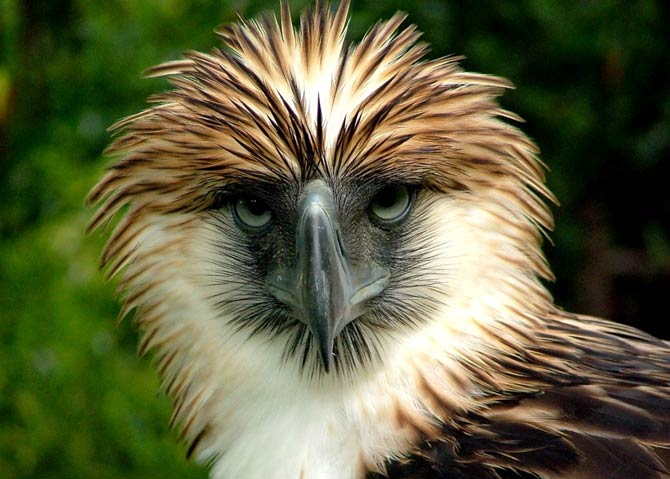
Size
The body length ranges from 86 to 102 cm (2 ft 9.9 in – 3 ft 4.2 in); however, research on several specimens has shown that the largest recorded male was 95 cm (3 ft 1.4 in) long, while the largest female reached 105 cm (3 ft 5.3 in).
The largest bird of prey in captivity
The largest Philippine eagle kept in captivity measured 112 cm (3 ft 8.1 in), making this species the largest bird of prey in terms of length. It is surpassed in length only by the extinct Haast’s eagle (Harpagornis moorei), as the similarly sized Argentavis (which had the largest wingspan of any known flying bird) is classified as a scavenger.
However, this specimen may not be a fair representation of a wild population, as in captivity it had significantly easier access to food, which could have allowed it to reach such a large size – similar to the heaviest recorded harpy eagle.
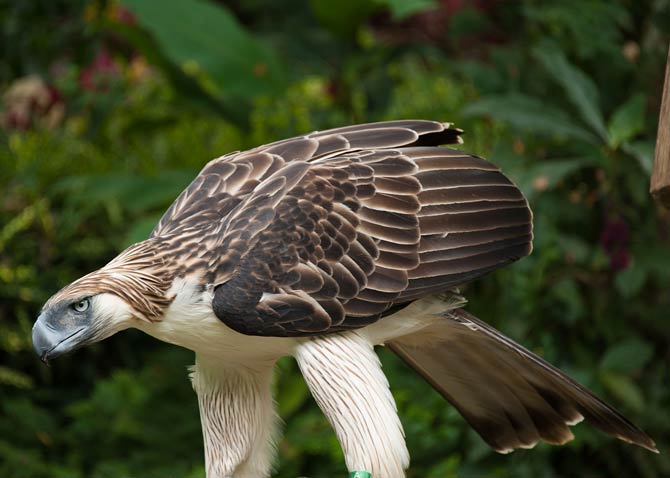
Weight
The Philippine eagle weighs between 4.5 and 8 kg (10 – 18 lb); however, the average weight is lower, with females having a mean weight of about 6 kg (13 lb) and males around 4.5 kg (10 lb). The Philippine eagle boasts a wingspan ranging from 184 to 220 cm (72 – 87 in), with each wing measuring between 57.4 and 61.4 cm (23 – 24 in) in width.
Tarsus, tail and beak
This Philippine bird possesses the longest tarsus (the part of the leg between the foot and the shank) among all members of the Accipitridae family, measuring from 12.2 to 14.5 cm (4.8 – 5.7 in), while its beak averages over 7 cm (2.76 in) in length. The tail is also substantial, growing up to 42 – 45.3 cm (16.5 – 17.8 in), with some sources even reporting lengths of up to 50 cm (19.7 in).
The vocalizations of the Philippine eagle are loud and shrill, often described as resembling a whistle. Young eagles emit a series of high-pitched calls when begging for food.
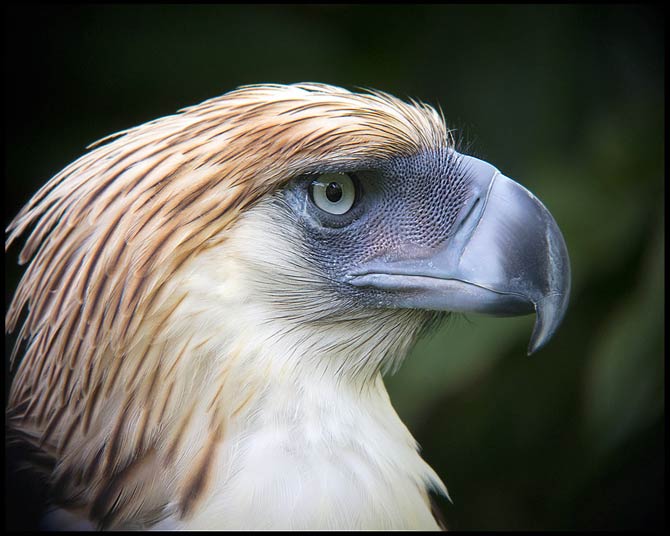
Diet and hunting style
Diet
Throughout many years this animal was called a monkey-eating eagle in the Philippines, as it was believed that it eats monkeys exclusively (the only primate mammal living in the Philippines is a macaque subspecies – Macaca fascicularis philippensis), however, over time it turned out not to be true.
Most likely a reason for such an approach was finding undigested monkey remains in its stomach.
As the vast majority of predators, the Philippine eagle is opportunistic – it feeds on whatever is the easiest catch and whatever is most abundant in a given moment. As an apex predator, it eats many animals – from a 10-gram (0.022lb) bat to a 14-kg (31 lb) Philippine deer (Rusa marianna).
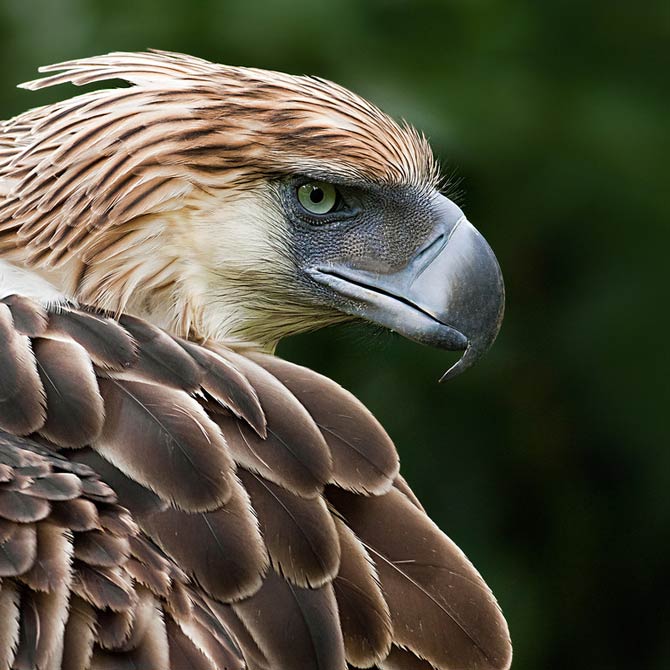
A diet depends on the region
Its diet highly depends on the inhabited region, as on the Luzon and Mindanao islands the bird encounters two different types of fauna, e.g. the Philippine flying lemur (Cynocephalus volans) being an element of the Mindanao eagles’ diet do not live in Luzon – an island abundant with monkeys, birds, flying foxes (Pteropus), enormous Northern Luzon giant cloud rats (Phloeomys pallidus), which can weigh twice as much as flying lemurs and reptiles (large snakes and lizards).
Philippine eagle generally prefers the abovementioned flying lemurs (in their habitat regions), it can see prey in a small ungulate mammal or even a human…
The Mindanao predators’ menu consists of macaques, flying squirrels (Pteromyini), Asian palm civets (Paradoxurus hermaphroditus), tree squirrels, giant fruit bats of the Megachiroptera suborder, rats, birds (owls and hornbills), reptiles.
Several cases of snatching a wild boar and a small dog were documented.

Hunting style
Philippine eagle uses two hunting techniques: the first one is based on a stationary observation of potential prey from a tree branch, the other one involves cyclic flying between the hunting spots. Using the latter, the eagle flies down to lower and lower branches, seeking prey. If one does not show up, the bird returns to the highest vantage point and repeats the whole ‘ ritual’.
This method proves most effective when hunting for flying lemurs and flying squirrels as, being nocturnal animals, they use camouflage during the day to prevent being attacked by predators.
Pairs of Philippine eagles often act as a hunting team during monkey hunts: one distracts the monkeys’ attention, while the other strikes from behind.
As macaques are often of similar size to Philippine eagles, they are sometimes a difficult and dangerous opponent: eagles are regularly left with a broken leg after the scuffle.
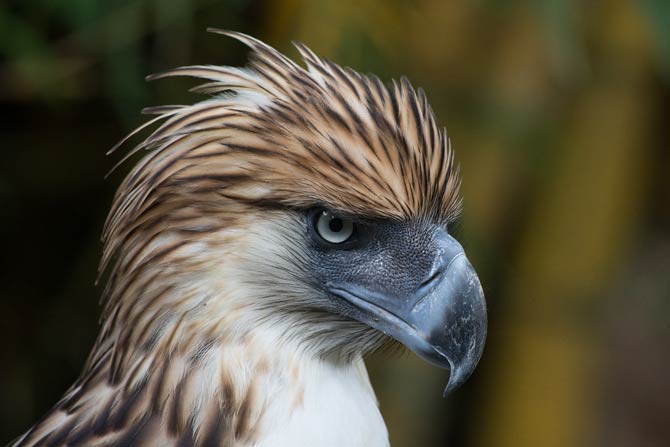
Breeding
Females reach sexual maturity being at least 5 years old, males at 7 years of age. Like the majority of the Accipitridae family, the Philippine eagle is a monogamist. A pair once bound together remains in a relationship until the end of their lives, if one partner dies, the other pursues a new one.
The mating process begins with nest building; after having done all the work the Philippine eagle remains in close proximity to the newly-built home.
The moment a male spots a female, an aerial chase begins: after the ‘catch’, the male demonstrates its talons. The presentation is accompanied by loud calls.
Another signal of breeding readiness is bringing the padding material to the nest, after the whole ritual copulation takes place, repeatedly inside and outside the nest.
The hatching season normally starts in July, though there are some differences depending on the inhabited region, precipitation and the predatory population in a given area.
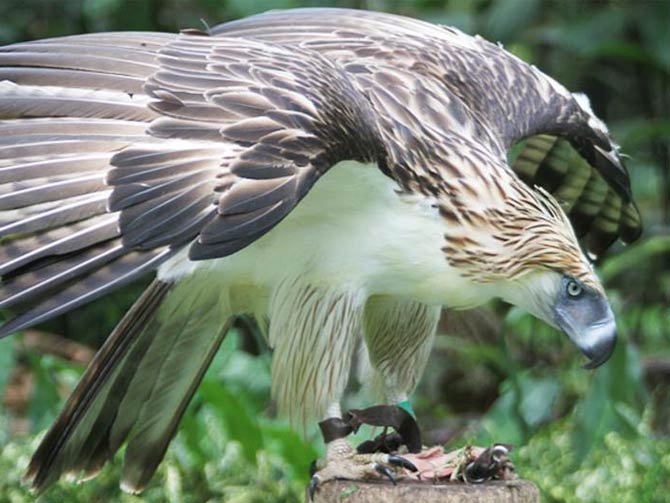
Nest
The nest is made of branches in the spreading tree canopies (often even 30 meters high). The inside of a hatching nest, which diameter reaches 1.5 m, is lined with green leaves. One net may be used multiple times by the same pair.
Offspring
A female usually lays one egg in the late afternoon or at dusk, though cases of two eggs in one hatch were also recorded. If an egg remains dead, or a nestling dies soon after hatching, the pair will try to have another baby in the following year (normally hatching takes place once every two years).
Incubation lasts 58-68 days (62 on average), both the mother and father take part in it: a female usually incubates eggs during the day, the male takes over the responsibility at night. Parents also feed the newly hatched chick, protect it from sunlight and rain throughout the next 7 weeks. The offspring grows feathers after 4-5 months, and they are looked after for 20 months total.
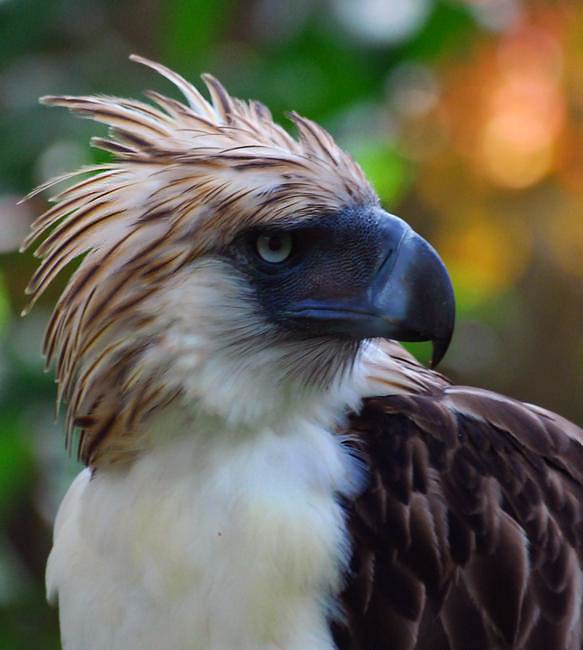
Population
The population of the Philippine eagle is estimated to oscillate between 180 – 500 eagles. Therefore it practically is a critically endangered species…
Detailed characteristic/size
Philippine eagle (Pithecophaga jefferyi)
- Length:
- in the wild: 86 -102 cm (2ft 9.9in – 3ft 4.2in)
- longest in captivity: 112 cm (3ft 8.1in)
- the largest male was 95 cm (3ft 1.4in) – in the wild
- the largest female was 105 cm (3ft 5.3in) – in the wild
- Body mass: 4.5 – 8 kg (10 – 18lb)
- average female mass: 6 kg (13 lb)
- average male mass: 4.5 kg (10 lb)
- Wingspan: 184 – 220 cm (72 – 87 in)
- Wing width: 57.4 – 61.4 cm (23 – 24 in)
- Tarsus length: 12.2 to 14.5 cm (4.8 – 5.7 in)
- Beak length: over 7 cm (over 2.76 in)
- Tail length: 42 – 45.3 cm (16.5 – 17.8 in), max. 50 cm (19.7in)
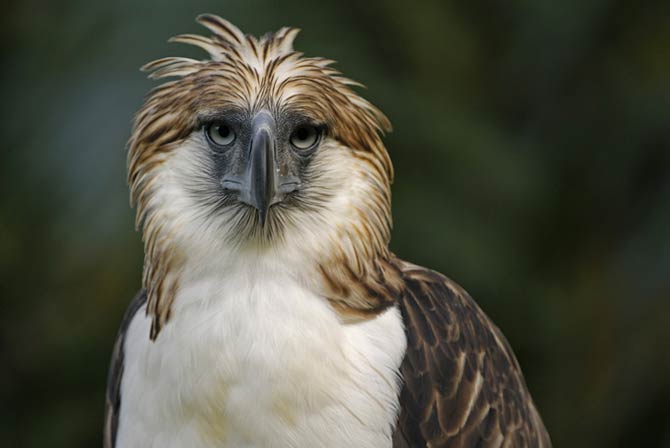
Philippine eagle, monkey-eating eagle – interesting facts
- Sexual dimorphism in terms of size has not been confirmed, yet it is supposed that males are about 10% smaller than females. Among many large species of the Accipitridae family the size difference between adult males and females may exceed 20%.
- In some areas, 90% of these eagles’ diet was the Philippine flying lemur.
- A monkey-eating eagle’s nest is usually located higher than 30 m (98 ft) above ground.
- 8 – 10 days before laying eggs female falls into a specific lethargy, the so-called egg lethargy. In this state, the bird does not eat, drinks large amounts of water and keeps wings in a descending position.
- The nest’s sole threat is human activity, for both macaques and civets, being predatory, clearly avoid the eagles’ breeding territories.
- Philippine eagle is the Philippines’ national animal since 4 July 1995.
- Philippines – the only country in the world where this species lives – has one of the highest deforestation rates in the world, and such actions have the highest impact on the gradual extinction of the Philippine eagle.
- Though a Philippine eagle may be considered the largest eagle, due to its habitat preferences (forest areas) it does not have the largest wingspan. More information considering this matter may be found in the article: The largest eagles Top 10.
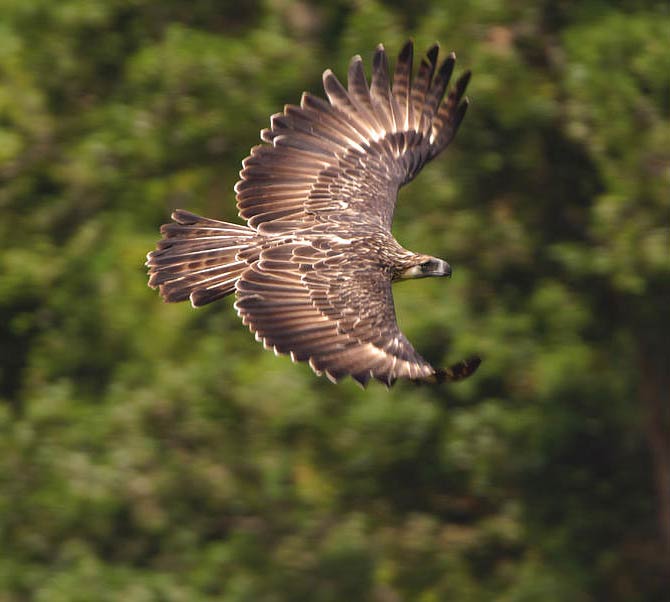
Recommended
- Animals records
- Largest and most powerful birds of prey – Top 10
- Largest eagles Top10
- Fastest animals – Top 10
- Fastest birds – Top 10
- Most venomous snakes – Top 10
- Largest sharks Top 10
- Heaviest land animals
- Largest crocodiles Top 10
- Largest whales TOP 10
- Longest snakes Top 10
- Highest (Top) flying bird – Top 10
- Largest and heaviest birds
- Largest turtles TOP 10

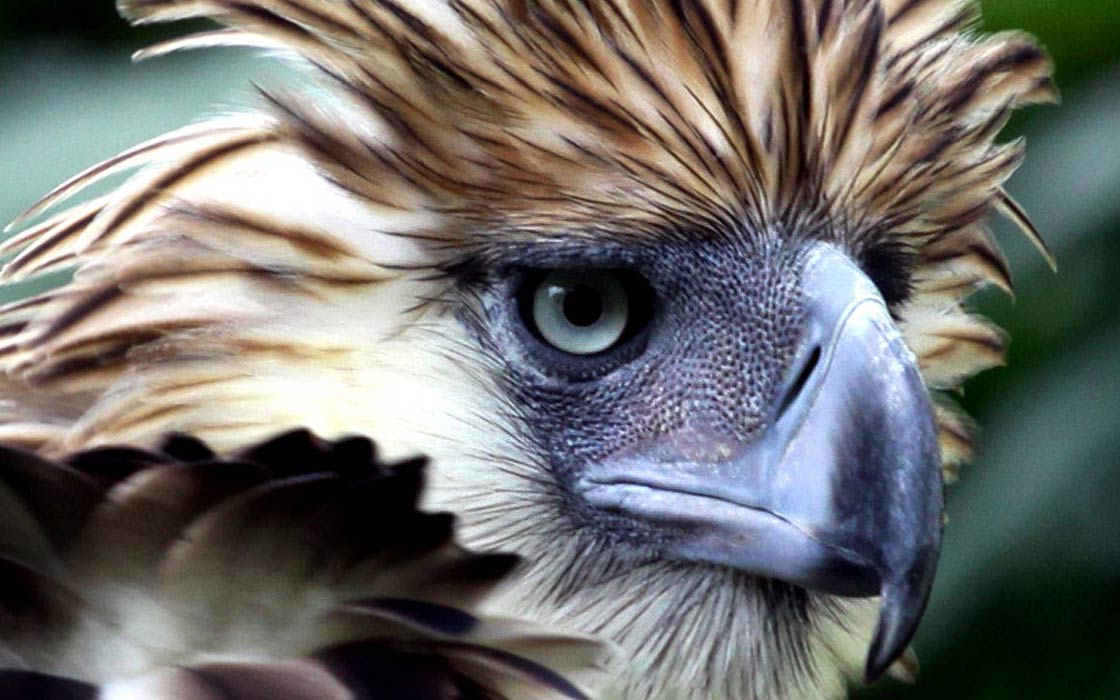






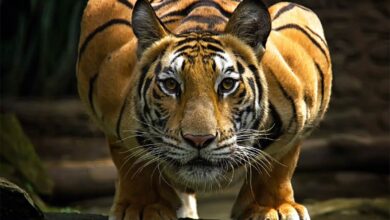

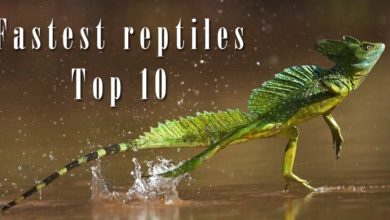






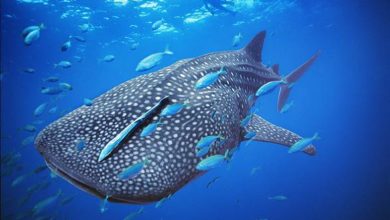

This is the most beautiful eagle.
Impressive, I did not know that such birds exist…
Awesome Eagle
Macaques are probably the most dangerous prey to eagles especially large strong male who lead the pack which can weigh up to 10 kg the group or pack composed of 8-20 individuals which means more eyes and ears to warn their group from predators and potential danger that make them harder to hunt the large alpha male exposes himself to the eagle as a decoy to let other member of the pack to escape but the Philippine eagle has deployed a strategy when hunting macaques they hunt in pair, the one presented itself insight of the monkeys while the other swoop from behind to go for the kill.
Saying that an encounter with a large male macague left the eagle “Regularly” with a broken leg after a scuffle is highly misleading this instance was documented only once the eagle and the large male macaque struggles during the scuffle and they both fell from the tree, this is where the eagle broke it’s leg due to the fall but it survived the ordeal. (Source: Threatened Birds of Asia)
“Throughout many years this animal was called monkey-eating eagle in the Philippines As It was believed to feed exclusively on monkeys”…
-This is partly true because during those era 1800’s the Philippine Islands was still much covered with its original thick Old-growth forests about 90% of its original forests was still intact and monkeys where still abundant and the eagle frequently seen by locals taking and feeding on long-tailed macaques in Bonga, SAMAR where the eagle was first discovered by the English Explorer John Whitehead in 1896 where it got its name Monkey-eating eagle.
This eagle is the most beautiful of all eagles. Too sad it’s critically endangered here in our country and no strong support and dedication coming from our government. Hopefullu the new administration will dedicate a strong support for this powerful yet endangered bird of prey.
Because this bird is so intriguing that people prefer to make this as pet. Phil has passed laws to protect this specie but I didn’t heard anyone convicted for violating such laws. Massive mining and deforestation were also widespread specially in Mindanao making this birds’ reproduction more difficult.
The Philippine Eagle would be worth seeing… If only we could help the eagles live peacefully.
P.S
May I use the pictures for reference? I mean more like in a photoshop contest…